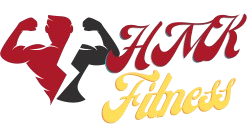Table of Contents
ToggleIntroduction:
Fitness goals are often easier to achieve if a person adopts an organized approach to training, so it is not surprising that well-structured workout splits have become one of the leading strategies athletes and fitness enthusiasts use. Among such routines, the three-day workout split provides the perfect balance, touching various muscle groups within your body while providing ample time for recovery and growth.
This guide will take us through the benefits and effectiveness of a 3-day workout split routine, highlighting how this plan can help you pack muscles and bulk up strength in no time. With this understanding, it becomes prudent to realize that those who need to establish a regular workout schedule and those who seek to optimize their training programs fall under the same category. Understanding what a 3 day split is based upon can be vital in improving your physical fitness journey.
Benefits of a 3 Day Workout Split:
A 3-day workout split has become quite popular among fitness enthusiasts due to its combination of intense workouts and enough recovery time. Listed below are some merits that come with using a three-day workout program.
Optimized Muscle Recovery: For instance, focusing on specific muscle groups, such as upper body parts, lower body regions, or just total body/cardio days on different days, allows muscles to get sufficient rest before session(s). This helps them heal properly, which leads to more strength buildup as well.
Efficient Time Management: Some people choose three workout days because they can be fully utilized within a tight schedule, thereby ensuring all sessions are focused on meeting set objectives. This means that someone juggling work, family life, and staying fit will find these weekdays very practical.
Balanced Training Focus: For example; upper-body days include exercises like chest presses or rows while lower-body ones focus on squats and deadlifts. A day where you do total body workouts or cardio is flexible thus promoting overall fitness.
Enhanced Recovery and Adaptation: Ranging from intense workout days to rest days enables your body to adjust well to training stimuli lowering the risk of overtraining and injuries hence maintaining a long term sustainability in fitness progress.
Progressive Overload: Progressive overload can be facilitated by a 3-day workout split if consistently applied, as it is one of its main principles for muscle growth and strength improvements. It means that constantly increasing weights, reps, or intensity will help you achieve better results over time.
In conclusion, incorporating a three-day workout split into your fitness routine supports overall wellness and enhances physical performance by encouraging a balance between Exercise and recuperation.
Key Components of a 3 Day Workout Split:
Basically, a well-planned three-day routine, which covers different muscle groups and certain fitness goals for each part of the body, should be defined within this period. Here are some components one can expect to find in their typical 3 day split workout plan:
Day 1: Upper Body:
- Focus areas: Developing upper body muscles through strength training for hypertrophy.
- Sample Exercises: Include chest presses, rows, shoulder presses, and bicep curls, among others.
- Objective: This day’s exercises should target those muscles around the chest area (pectoralis major), back muscles (latissimus dorsi), shoulders (deltoids), and those on arms, thus making them more muscular.
Day 2: Lower Body:
- Focus areas: Enhancing lower body muscles with power exercises so that they are strengthened, especially when lifting weights.
- Target: Focus on the legs, hips, and glutes muscles to enhance strength, stability, and muscular endurance in the lower body.
Day 3: Total Body or Cardio/Conditioning:
Option 1: Total Body:
- Focus: Use the entire body.
- Sample Exercises: Whole-body circuits, power movements like burpees, kettlebell swings, and planks.
- Objective: Develop a number of muscle groups at the same time to improve overall fitness and coordination.
Option 2: Cardio/Conditioning:
- Focus: Strengthening cardiovascular endurance through conditioning exercises.
- Sample Exercises: Running, cycling, HIIT workouts, or aerobic exercises.
- Objective: This will contribute to better heart health and enable one to burn more calories while supplementing strength training days.
Flexibility and Adaptability:


One good thing about three-day workout splits is that they can be tailored to different fitness levels. You can choose each day based on whether you are interested in muscle building, maintaining a healthy heart, or improving your general well-being. Strategically alternating between upper-body workouts, lower-body workouts, and full-body/cardio sessions not only optimizes muscle recovery but also guarantees an all-around fitness development. This systematic approach results in even strength gains and complete physical fitness.
Sample Workout Plans:
Implementing a three-day workout split involves designing structured workout plans for each training session. Here are sample workout plans tailored to each day of the split:
Day 1: Upper Body:
Warm-up with dynamic stretches lasting between five and ten minutes and light cardio movements.
Chest Press: (3 sets x 8-12 reps)
Rows: (3 sets x10-15 reps)
Shoulder Press: (3 sets x8-12 reps)
Bicep Curls: (3 sets x10-15 reps)
Tricep Dips: (3 sets x10-15 reps)
Cool down by stretching upper body muscles.
Day 2: Lower Body:
Warm-up with dynamic stretches lasting between five and ten minutes and light cardio movements.
Squats: (4 sets x8-12 reps)
Deadlifts: (3 sets x8-12 reps)
Lunges: (3setsx 10 -15 per leg).
Leg Press-(3setsx 10– 15reps).
Calf Raises- (3 Setsx 15–20 Reps).
Cool down by stretching lower body muscles.
Day 3: Total Body or Cardio/Conditioning:
Option 1: Total Body:
Warm-up consists of dynamic stretches lasting between five and ten minutes accompanied by light cardio movements.
Burpees: (Sets × Reps) = (03 × 10 – 15 repetitions)
Kettlebell Swings: (Sets × Reps) = (03 × 12 – 15 repetitions)
Plank with Shoulder Taps: (Sets × Reps) = (03×15–20 repetitions)
Mountain Climbers: (Sets ×Reps )= (03×20–30 repetitions).
Russian Twists: (Sets ×Reps )= ((03×15–25 repetitions)/side).
Cool-down consists of whole-body stretching exercises that enhance flexibility and ease muscle soreness.
Option 2: Cardio/Conditioning:
Begin the warm-up session with a light cardio exercise for about five to ten minutes.
1. Running: run moderately for twenty to thirty minutes.
2. Cycling: steady cycling for thirty minutes.
3. HIIT Workout: alternating between high-intensity intervals (e.g., sprinting) and recovery periods (e.g., walking) for fifteen minutes.
4. Jump Rope: 3 sets x 1 minute with 30 seconds rest between sets.
5: Aerobic Exercise: about twenty to thirty minutes of dance fitness or aerobics.
Cool-down exercises should be gentle, involving breathing in and out deeply.
Customize and Progress:
Adjust each exercise’s intensity, sets, and repetitions based on your fitness level and goals. Progressively increase weights or resistance to challenge your muscles and stimulate growth. Consistency and proper form are key to maximizing results from your 3 day workout split routine.
Nutrition and Recuperation Tips:
You must incorporate proper nutrition and recovery strategies to get the most out of your 3 day workout split. Here are some tips that will help you on your fitness journey:
- Balanced Diet:
Eat a balanced diet with lean proteins, complex carbohydrates, healthy fats, and as many fruits and vegetables as possible. Proper nutrition is essential for workouts and recovery.
2. Hydration:
Drink enough water before, during, and after workouts to avoid dehydration and enhance performance. Drink water throughout the day, especially when engaging in intensive Exercise.
3. Post-Workout Nutrition:
Consume a post-exercise meal or snack containing both protein and carbohydrates within 30-60 minutes. This assists in glycogen re-synthesis for muscle repair and growth.
4. Rest And Recovery:
Adequate rest between workout sessions prevents overtraining and promotes muscle recovery. Ensure you sleep well between 7 and 9 hours daily to enhance the overall recovery process.
5. Active Recovery:
On off days, combine activities such as yoga, stretching, or light walking with higher-intensity exercises. Enhanced blood flow through them leads to reduced muscle soreness through increased flexibility.
6. Listen To Your Body:
Learn how to interpret your body’s signal so that you can fine-tune your workout intensity or schedule if necessary. Push yourself, but do not overdo it, leading to injuries or exhaustion.
7. Supplements:
Try out different supplements, like BCAAs (Branch Chain Amino Acids) or Creatine, which help complement your nutrition for better muscle recovery during workouts. Consult a healthcare professional before starting any new supplement.
By emphasizing nutrition, hydration, and recovery through a three-day workout split routine, maximum fitness progress is achieved while long-term health is maintained.
Tips for Success:
Successful implementation of a 3-day workout split necessitates commitment, consistency, and strategy from an individual intending to initiate it. Here are some practical tips that would help you achieve more:
1. Set Clear Goals:
Specific fitness goals such as building muscle, increasing strength, or improving overall fitness should be defined. These specific aims will guide your workout intensity and progression.
2. Plan and Schedule:
Develop a weekly workout schedule that includes your three-day split routine and rest days. Consistency is important in achieving long-term fitness goals.
3. Warm-up Properly:
Each workout session must begin with a proper warm-up to increase blood flow, loosen up muscles, and prevent injuries. Include dynamic stretching and light cardio exercises.
4. Focus on Form:
Maintain correct exercise form through each repetition to ensure maximal muscle involvement and reduce the chance of injury. Quality rather than quantity is essential for effective strength training.
5. Progressive Overload:
Gradually increase the intensity, weights, or repetitions of exercises to challenge muscles and stimulate their growth. Progressive overload is critical for continual improvement.
6. Listen To Your Body:
Listen to muscles’ fatigue, soreness, or overall energy levels. Adjust the level of activities performed per day or include rest days when necessary to deter overtraining while fostering the recovery process.
7. Stay Motivated:
Track your progress, set rewards for milestones achieved, work out with friends, and stay committed to your fitness journey.
8. Evaluate And Adjust:
Evaluate how you have been working out as often as possible by reviewing previous decisions made on splits so that they will be changed in case one needs to improve one’s body through nutrition or other means.
9. Recovery Techniques:
Appreciate the process of getting fit and celebrate every small achievement. You’re more likely to keep up with workouts if you love doing them.
By including these tips in your 3-day workout split routine, you can achieve maximum training efficiency and fitness goals faster.
Conclusion:
The 3 day workout split is a structured and practical approach to attaining your fitness objectives, whether it is building strength, growing muscles, or improving overall fitness. By splitting your week between upper body, lower body, and total body/cardio sessions, you can maximize muscle recovery time, foster balanced strength gains, and maintain an ongoing physical development program.
Furthermore, incorporating proper fueling, hydration, and rest techniques into your exercise plan will facilitate your progress and support long-term health. Remember that consistency counts; proper form matters; listen intently to what your body says—whatever you are doing right now concerning the sporty stuff always works perfectly well.
Whether you’re new to weightlifting or would like to modify your current program, there is no better all-around selection than using a 3-day division of workouts. It’s so flexible and efficient for people of any level of proficiency in this field who regard themselves as active exercisers.
FAQS:
Why is a three day workout split beneficial?
A 3 day workout split allows for targeted muscle group training with ample recovery time, promoting muscle growth and overall fitness gains.
What are the key components of a 3 day workout split?
It typically includes upper body, lower body, and total body/cardio days, each focusing on specific muscle groups and fitness objectives.
How can nutrition and recovery support a 3 day workout split?
Proper nutrition and recovery strategies help replenish energy stores, support muscle repair, and optimize performance during workouts.
What tips are recommended for success with a 3 day workout split?
Tips include setting clear goals, scheduling workouts, focusing on proper form, incorporating progressive overload, and prioritizing recovery and adaptation
Why is consistency important in implementing a 3 day workout split?
: Consistency ensures regular adaptation to training stimuli, helps maintain progress, and supports long-term fitness goals effectively.











